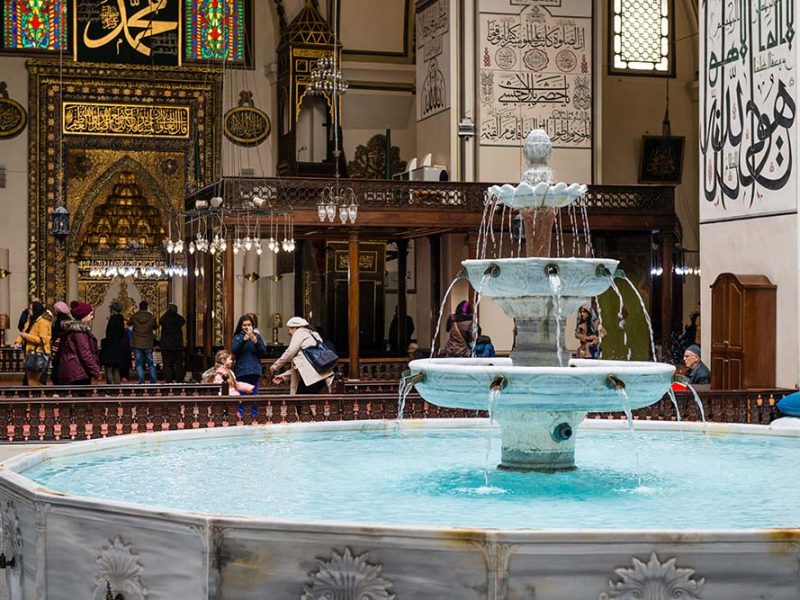Overview of Bursa Ulu Mosque
The Bursa Ulu Mosque (Ulu Cami) is one of the most iconic religious structures in Turkey. While many mosques across Anatolia are named “Ulu Mosque,” this one in Bursa, commissioned by Ottoman Sultan Yıldırım Beyazıt, stands out for its historical, architectural, and spiritual significance.
Built between 1396 and 1400, the mosque is a landmark of early Ottoman architecture and represents a key transition from Seljuk influences to the distinctive Ottoman mosque style.
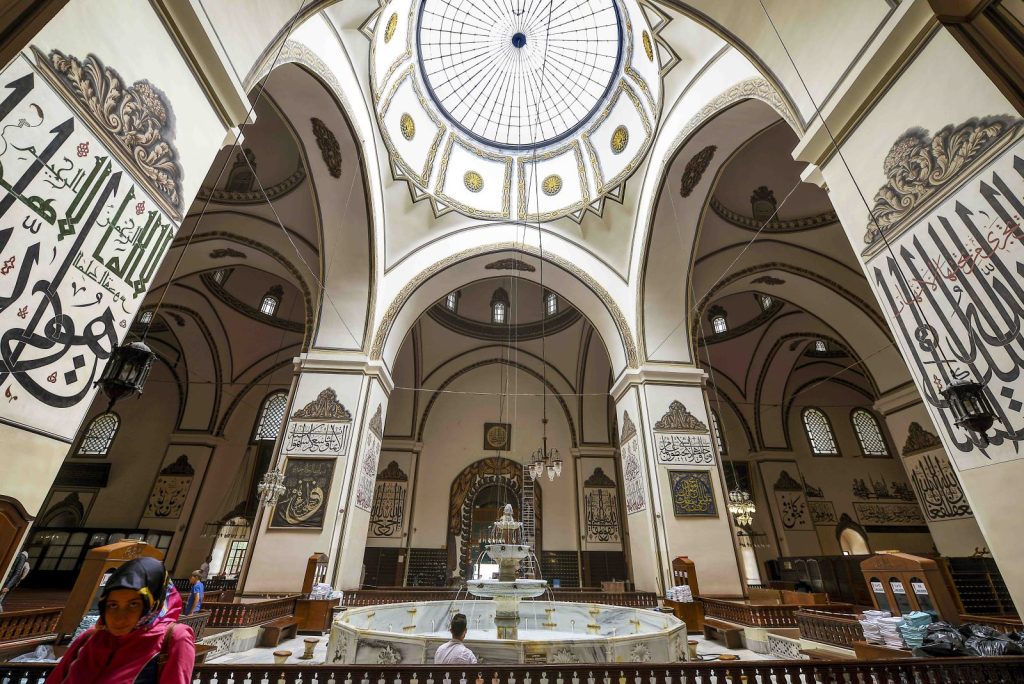
Ulu Cami entrance
Historical Background
The construction of the Bursa Ulu Mosque began shortly after Sultan Yıldırım Beyazıt’s return from the Battle of Niğbolu. According to the inscription on the mosque’s pulpit, construction started in 1396 and was completed in 1399 or 1400.
Bursa was the capital of the Ottoman Empire at that time, and the Ulu Mosque quickly became its spiritual heart. Over centuries, it has undergone several restorations due to war and natural disasters.
Restoration Through the Ages
1402: After the Battle of Ankara, when Timur’s forces captured Yıldırım Beyazıt, they damaged the mosque significantly.
1855 Earthquake: A powerful earthquake destroyed 18 of its 20 domes. Sultan Abdülmecid ordered its full restoration.
1950s: The mosque was restored again, reaching its current form, which continues to welcome worshippers and visitors.
Multi-Domed Marvel
The Bursa Ulu Mosque spans nearly 5,000 square meters and is one of the earliest examples of multi-domed Ottoman architecture. It features 20 domes arranged in five rows, supported by 12 massive columns on octagonal piers.
The mosque’s interior is known for its spacious prayer hall, which offers a sense of openness rarely found in mosques of its time.
Ali Nacar, the mosque’s architect, combined Seljuk and emerging Ottoman design principles. His use of domes and a symmetrical layout prefigured later developments in mosque design, including works by Mimar Sinan.
The Pulpit (Minber)
One of the mosque’s most remarkable features is its wooden pulpit, carved using the traditional kündekari technique. Made from walnut wood, the pulpit is decorated with intricate geometric and calligraphic designs in the sülüs script.
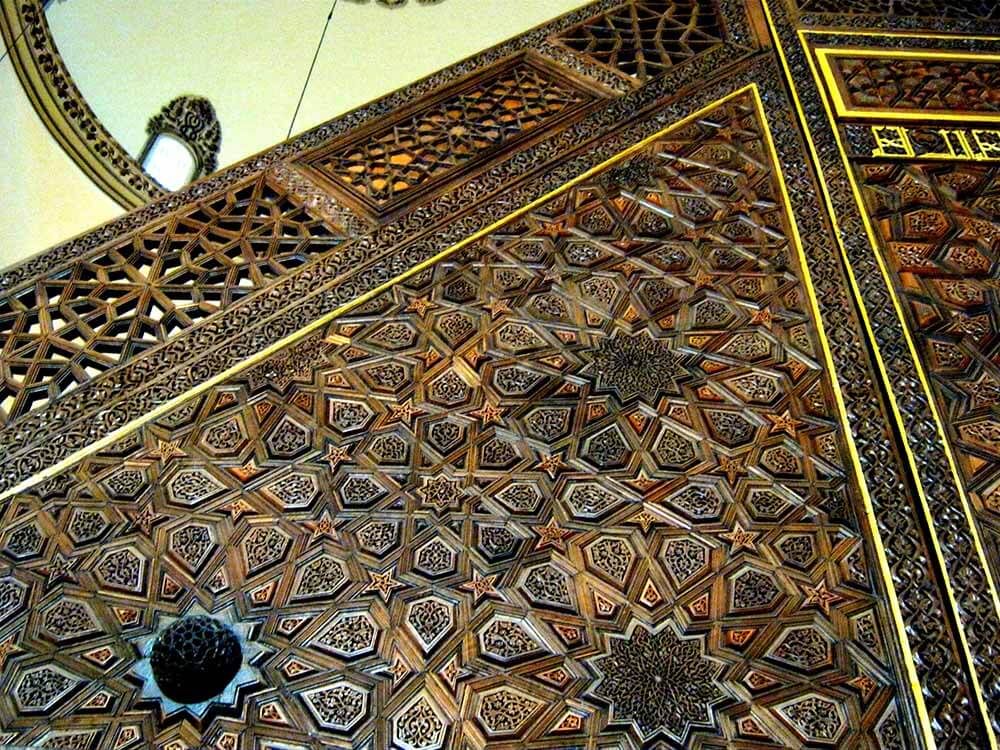
Kundekari, Bursa, Ulu Camii.
Hidden Solar System Relief
In 1980, scholars discovered that the pulpit contains a relief resembling the solar system, with the sun at the center and planets positioned in proportionate distances; an astonishing artistic detail from the 14th century.
Rich Calligraphy Collection
Inside the mosque, there are 192 large calligraphic panels and wall inscriptions. These works, created by renowned calligraphers in the 19th century, enhance the mosque’s spiritual ambiance and are a testament to Islamic artistic traditions in Ottoman Turkey.
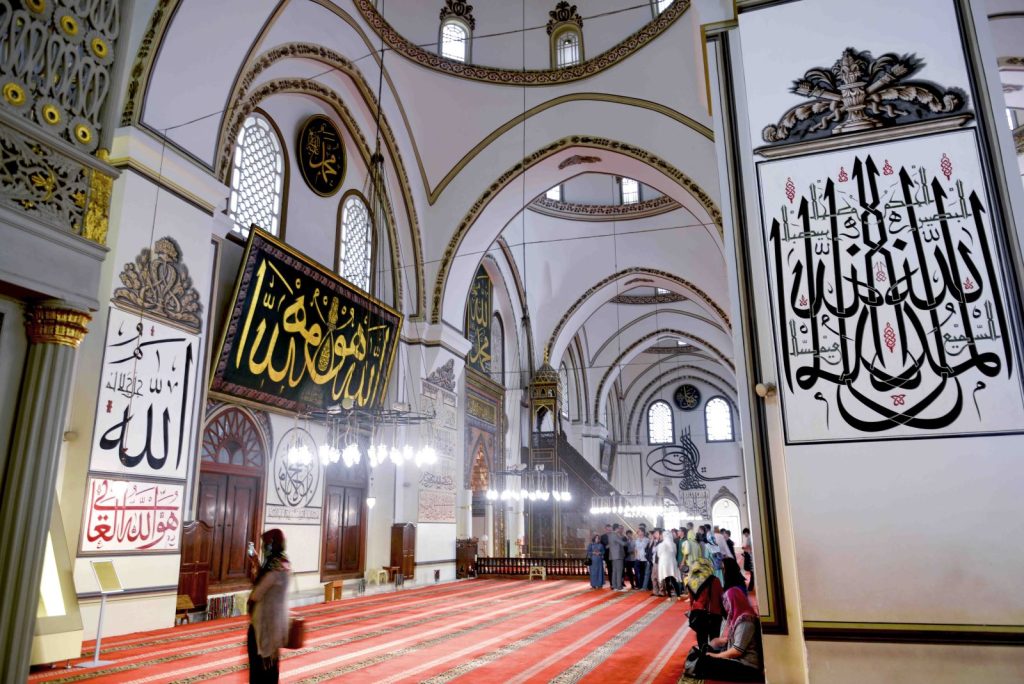
The Central Fountain and Its Legend
A unique architectural feature is the indoor fountain (şadırvan) located directly under the central dome. This rare element -borrowed from Seljuk traditions- is both functional and symbolic, contributing to the mosque’s serene atmosphere.
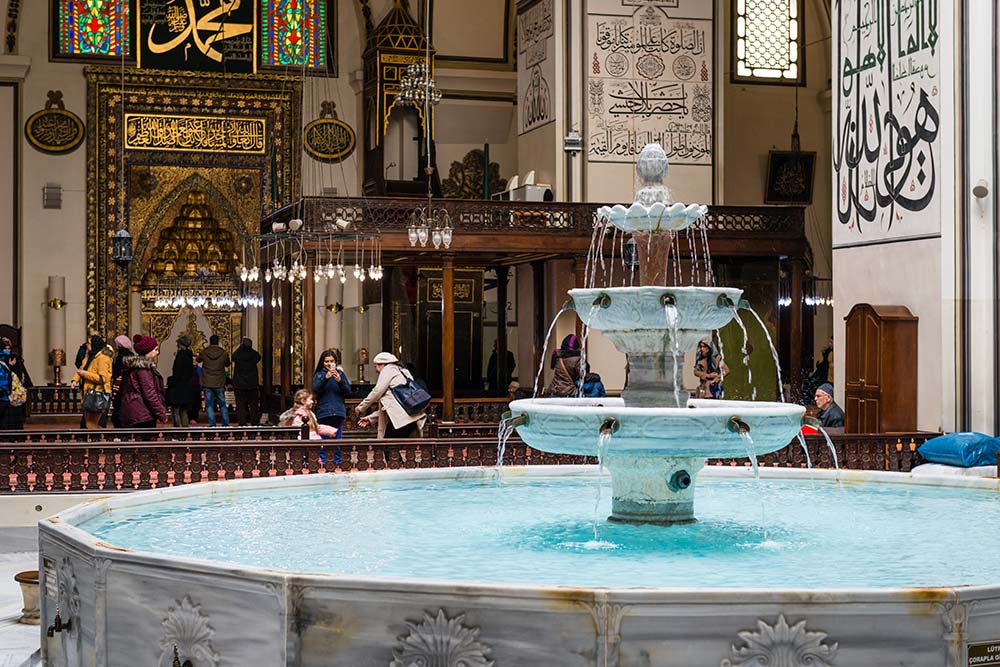
Şadırvan in Bursa Ulu Mosque
A Story of Ethics and Architecture
According to legend, a Jewish woman once owned a small plot of land where the mosque now stands. She was reluctant to sell, but the land was eventually seized. As a gesture of respect or repentance, the fountain was constructed on her land, and that specific area was left out of the prayer zone.
Famous Figures and First Prayers in Ulu Mosque
The mosque’s opening ceremony was a spiritual milestone:
- The first sermon was delivered by Süleyman Çelebi, author of the famous “Mevlid.”
- The first prayer was led by Somuncu Baba, a revered Islamic scholar.
- Yıldırım Beyazıt, Emir Sultan, and Molla Fenari were among the first congregants.
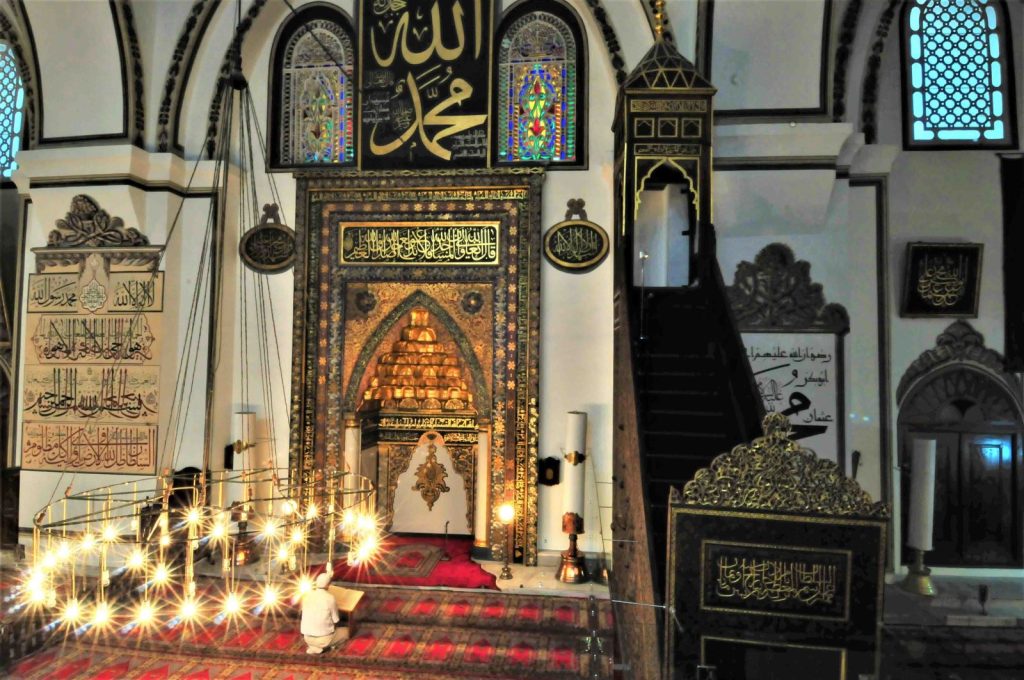
Minber
Visiting Bursa Ulu Mosque Today
Located on Atatürk Street in central Bursa, the Ulu Mosque remains open for worship and tourism. It is one of the most visited religious landmarks in Turkey and offers an unparalleled glimpse into early Ottoman architecture, Islamic art, and spiritual heritage.
Whether you’re a history lover, architecture enthusiast, or spiritual traveler, the Bursa Ulu Mosque offers a powerful experience. Its layered history, artistic brilliance, and legendary stories make it not just a building, but a living monument to Turkey’s rich Islamic and cultural heritage.

